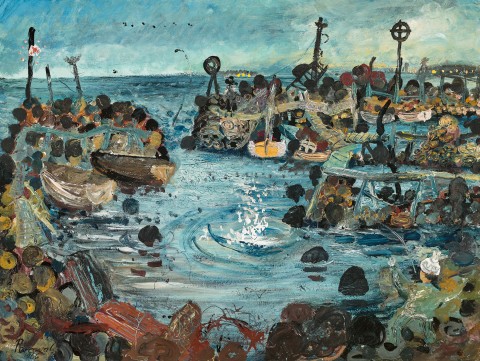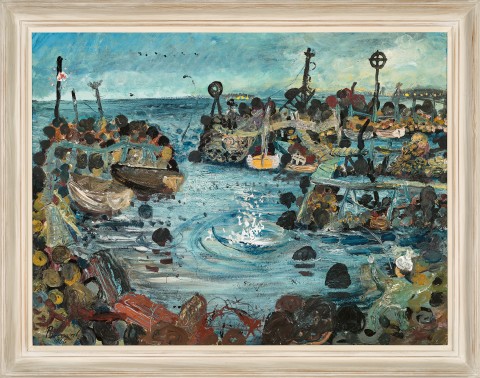THE SPLASH, 1956
JOHN PERCEVAL
oil and enamel on composition board
91.0 x 122.0 cm
signed and dated lower left: Perceval 1956
Australian Galleries, Melbourne
Geoffrey Hillas, Melbourne, acquired from the above in 1956
Australian Galleries, Melbourne
Joan Clemenger AO and Peter Clemenger AO, Melbourne, acquired from the above in March 1975
Exhibition of Paintings by John Perceval, Australian Galleries, Melbourne, 12 – 30 November 1956, cat. 5
Commonwealth Art Today, Commonwealth Institute, London, 7 November 1962 – 13 January 1963, cat. 16
John Perceval: A Retrospective Exhibition of Paintings, Heide Park and Art Gallery, Melbourne, 10 July – 26 August 1984, cat. 47
John Perceval: A Retrospective Exhibition of Paintings, Heide Park and Gallery, Melbourne, 1984, cat. 47, pp. 21 (illus.), 23
Grishin, S., ‘Perceval’s work in retrospect’, The Canberra Times, Canberra, 23 July 1984, p. 12
Allen, T., John Perceval, Melbourne University Press, Melbourne, 1992, pp. 105, 106 (illus.), 156
Allen, T., John Perceval, Melbourne University Press, Melbourne, revised edition 2015, pp. 133, 134 (illus.), 146, 171
Field, C., Australian Galleries: the Purves family business. The first four decades 1956-1999, Australian Galleries, 2019, pp. 34, 35 (illus.)
Gannets diving, 1956, enamel paint and gouache on composition board, 91.5 x 122.0 cm, in the collection of the National Gallery of Victoria, Melbourne, illus. in Plant, M., John Perceval, Lansdowne Press, Victoria, 1978, pl. 12, p. 41
Fisherman’s sights, Williamstown, 1956, oil on composition board, 91.5 x 121.0 cm, private collection, sold Deutscher and Hackett, 15 March 2017, Sydney, lot 6
Perceval #1.jpg
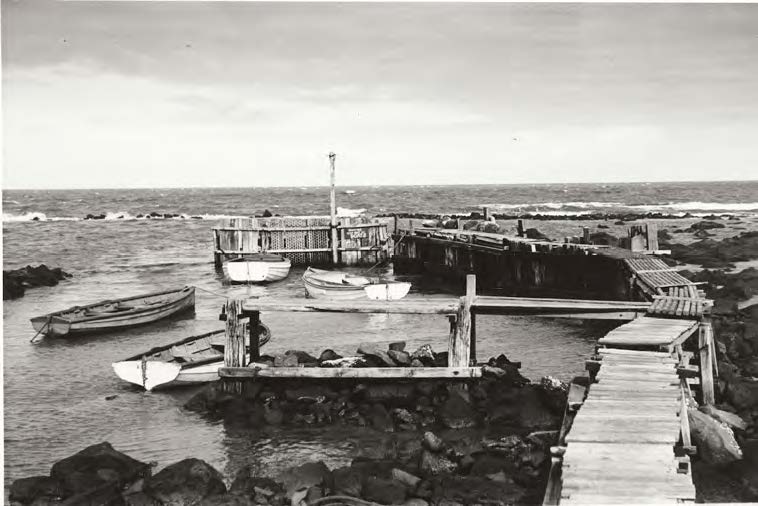
| Bayview Harbour, 1950s photographer: Bob Leak |
Williamstown today is a bustling tourist town on Port Phillip Bay that proudly celebrates its maritime history. Located on the traditional lands of the Bunerong people of the Kulin nation, the area was originally called ‘koort-boork-boork’ (clump of she-oaks), a paradise for sea birds such as gannets, pelicans and black swans. In the mid-1950s, however, when John Perceval first visited, Williamstown was a rundown graveyard of rusting hulks moored amidst the formerly bustling docks, but the artist, in a rapturous mood, described the experience as akin ‘to discovering Venice.’1 Also attracting his attention was a sequence of hand-built boat shelters located at the western edge of the town, and it was here that he painted The splash, 1956, as well as two others works Gannets diving (National Gallery of Victoria), and Fisherman’s sights (Deutscher and Hackett, The Gould Collection of Important Australian Art, Sydney, 15/03/2017, lot 6). Now known as ‘the Williamstown series’, Perceval’s joyous paintings are recognised as an iconic moment in Australian art.
Perceval #2.jpg
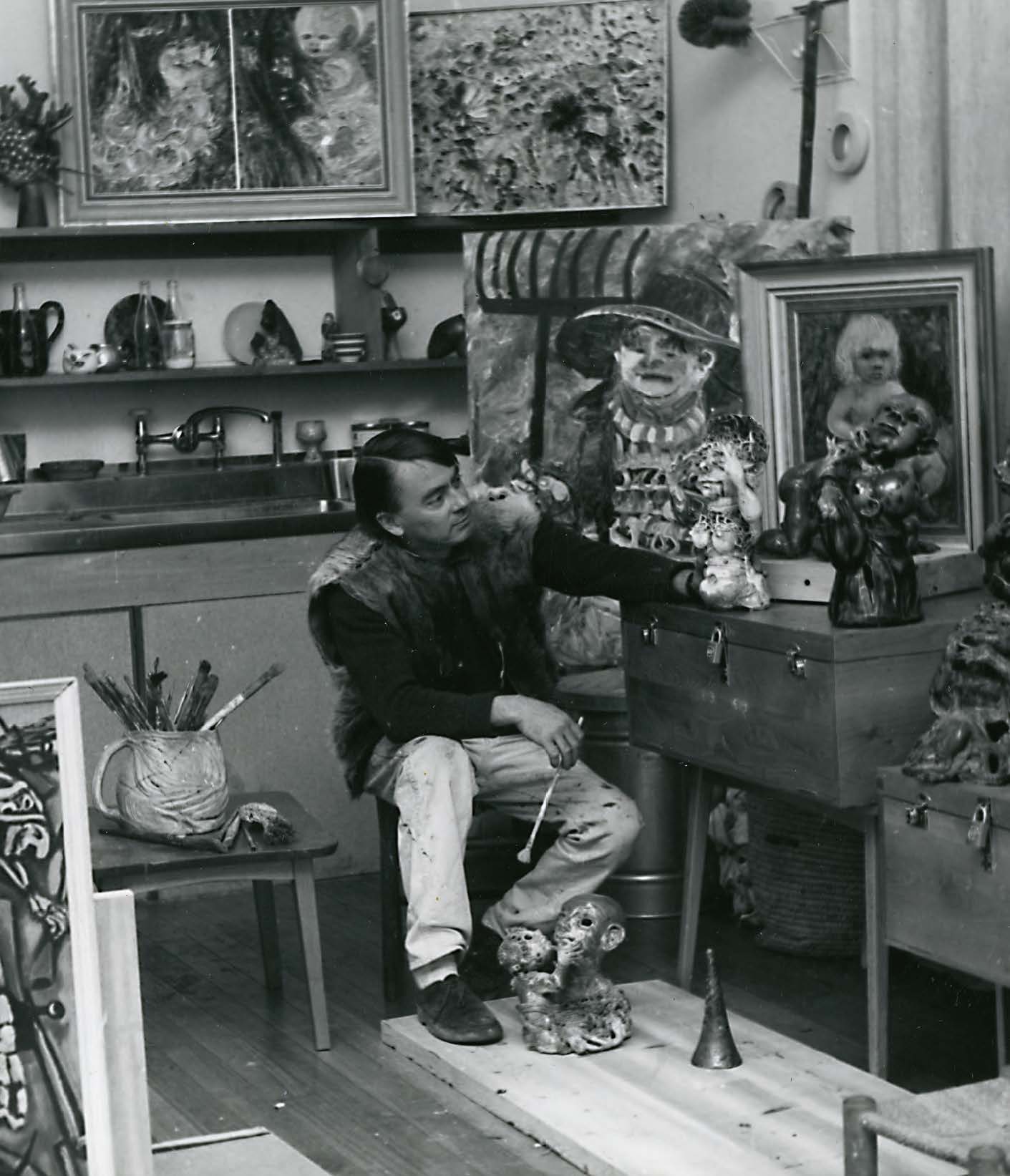
| John Perceval in his studio at the Australian National University Photographer: The Canberra Times Ltd |
Although the artists Frederick McCubbin and Walter Withers had both painted the docks here in the early part of the twentieth century, few others had found the town worthy of consideration. Having recently bought his first car, an orange Volkswagen beetle, Perceval began exploring the outer regions of Melbourne. In 1956, with Charles Blackman as his passenger, he journeyed across the Yarra River and onwards down to Williamstown. Their mutual excitement was captured perfectly by Blackman in his drawing Portrait of Perceval at Williamstown, 1956 (formerly Dr Joseph Brown Collection), which shows his colleague waving in excitement whilst standing atop the rock walls next to the harbour opening shown in The splash. Known variously as Bayview Harbour, the Secret Harbour, and Jimmy’s Creek, the anchorage lies at the end of Bayview Street and was built in the 1920s by local fisherman from ‘a combination of rough and dressed bluestone, bricks, concrete rubble and various other combinations of building material.’2 A jumble of wooden walkways linked the individual shelters, and fishermen’s sights were added using old tyres painted white. Three fishing clubs also have their sheds here.
One of the reasons why Perceval’s Williamstown paintings are so celebrated is the highly individualistic approach he took in their depiction and, importantly, in their distinctive technique. In 1944, Albert Tucker introduced Max Hoerner’s influential book The Materials of the Artist and their Use in Painting (published 1921) to Perceval and his brother-in-law Arthur Boyd, and in this they found a wealth of information concerning Old Master techniques with which they began to experiment. They also began to research the artists Hoerner referred to, and Perceval was particularly drawn to the rambunctious peasant scenes of the Northern Renaissance artist, Pieter Breughel the Elder – subsequently painting his own variants set within Melbourne environs, such as Christ Dining at Young and Jackson's (Private collection), 1948; and Flight into Egypt, 1947 – 48 (Art Gallery of Western Australia). The bustling immediacy of these works are direct antecedents of the Williamstown series, and such was his new mastery of mediums and pigment that the noted artist-critic James Gleeson was moved to comment later that ‘John Perceval loves paint and is lavish with it. He loves the warmth or crispness of the air and evokes its quality with the exactness of an Impressionist and the feeling of an Expressionist.’3
Perceval #4.jpg
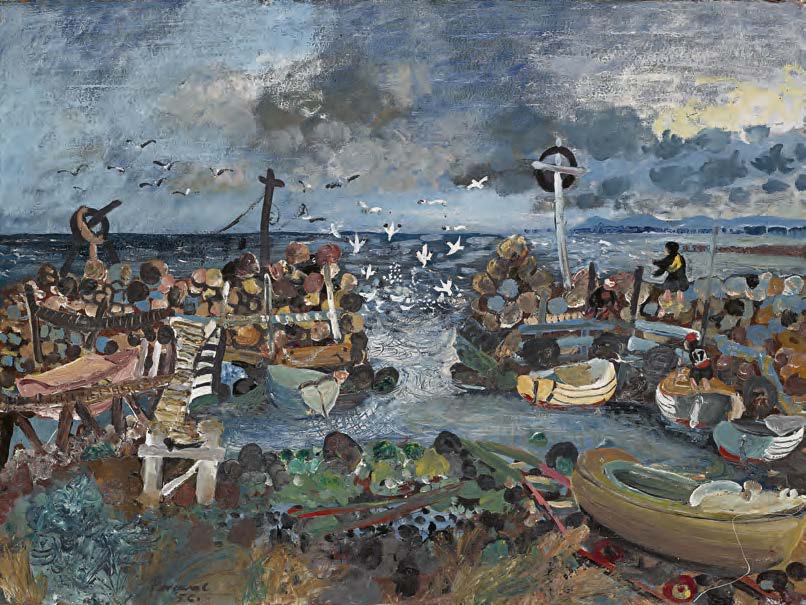
| John Perceval Gannets diving, 1956 enamel paint and gouache on composition board, 91.5 x 122.0 cm National Gallery of Victoria, Melbourne © John de Burgh Perceval/Copyright Agency, 2024 |
Perceval #3.jpg
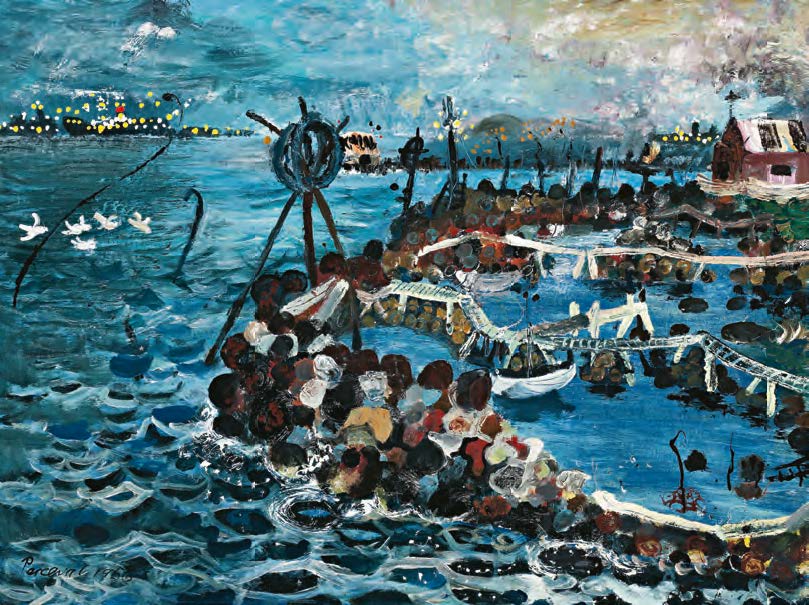
| John Perceval Fisherman's sights, Williamstown, 1956 oil on composition board, 91.5 x 121.0 cm Private collection © John de Burg Perceval/Copyright Agency, 2024 |
In The splash, this description is particularly evident. Due to the number of works he painted at Bayview Harbour, Perceval was no doubt drawn to the independent spirit that had resulted in the boat harbour’s construction and sought to express his empathy though a bravura technique involving a mix of ‘resinous colour over tempera with a heightening of white, allowing a calligraphic basic drawing and a rather dry scumbled top effect.’4 Perceval painted The splash from a vantage point just outside the eastern wall of the harbour, and takes obvious delight in the tangle of timber walkways and barbed wire surrounding a scatter of typical ‘couta’ boats, surmounted by the hand-made fisherman’s sights. On the horizon, the lights of Altona and Point Cook indicate that dusk has begun to fall, whilst at the lower right, a fisherman (wearing Perceval’s signature beanie, so likely a self-portrait) spreads his arms in delight having just witnessed a gannet plunging into the depths in search of a meal. There is a likely symbolism to the ripples left by the gannet, that of the doomed mythological figure Icarus, who drowned after the wings made by his father melted when he flew too close to the sun. Arthur Boyd painted his own version of Pieter Brueghel’s Landscape with the Fall of Icarus, c.1560,5 and it is plausible that Perceval also had this in mind when he painted The splash.
Perceval #5.jpg
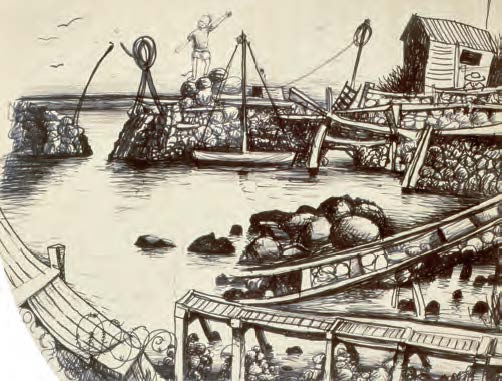
| Charles Blackman Portrait of Perceval at Williamstown, 1956 ink on paper, 93.2 x 121.0 cm Private collection © Charles Blackman/Copyright Agency, 2024 |
Further cementing the significance of the Williamstown paintings was the manner of their first exhibition. In June 1956, Tam and Anne Purves opened Australian Galleries in Collingwood as a professionally focussed exhibition space, sited in a former warehouse with their extant fabric pattern-making company located at the rear. After selling a couple of paintings by Perceval, the artist asked for a solo show and on visiting his home studio, the Purves encountered a multitude of paintings of Williamstown and Gaffney’s Creek, in the wilderness of Victoria’s Yarra Ranges. Perceval was insistent that they all be shown together, so the Purves made a strategic decision and reconfigured their business to solely focus on the promotion and selling of contemporary Australian art – and Perceval’s exhibition became their inaugural event. Two of the paintings had already been sold prior to the opening, Tug boat in a boat, 1956 by the National Gallery of Victoria, and Early morning – back beach, 1956 purchased by the renowned collector Bruce Wenzel. On his recommendation, Wenzel’s good friend, the timber importer Geoffrey Hillas, purchased The splash and remarkably this was the only painting sold during the exhibition itself. In many ways, this reflected the conservative tenor of collectors at the time but in subsequent years, understanding caught up with Perceval, and examples of the Williamstown series have now entered a number of prestigious collections with the National Gallery of Victoria adding a second work, Gannets diving, 1956 to their collection in 1957.
1. Reid, B., Of Light and Dark: the art of John Perceval, National Gallery of Victoria, Melbourne, 1992, p. 26
2. ‘Jimmy’s Creek: Williamstown Back Beach recreation precinct’, Victorian Heritage Database at https://vhd.heritagecouncil.vic.gov.au/places/13689 (Accessed 11 January 2024)
3. Gleeson, J., Modern painters: 1931 – 1970, Lansdowne Press, Sydney, 1971, p. 95
4. Plant, M., John Perceval, Lansdowne Press, Melbourne, 1971, p. 26
5. See Arthur Boyd, Boat builders, Eden, 1948, in the collection of the National Gallery of Australia, Canberra
ANDREW GAYNOR
